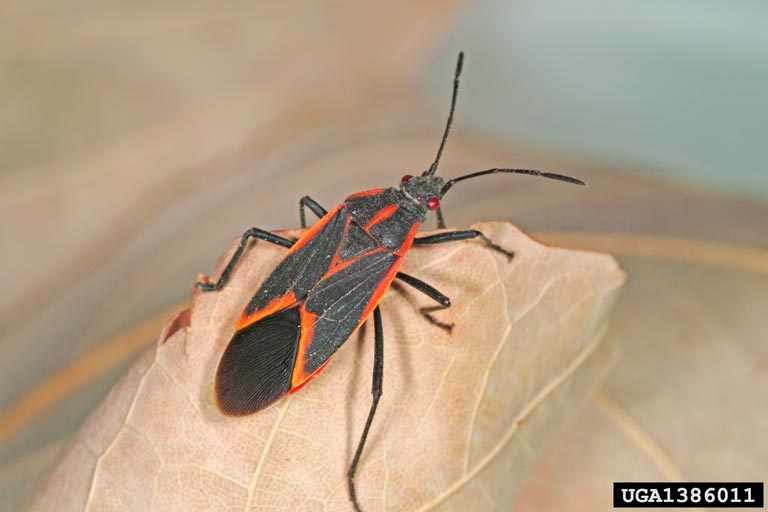Boxelder Bug
Boisea trivittata
Identification
- black bugs with red markings on body
- immature forms are smaller but easily distinguished from adults by their lack of wings and red abdomens
- look similar to red fire bugs and other related groups
Nesting Habits
- found in and around buildings in the spring and fall
- female boxelder trees or other seed-producing maples
- overwinter in cracks and crevices of buildings, especially in unshaded, sunny sides/areas of exterior walls or leaf litter
Diet
- prefer boxelder seeds, which are only found on female boxelder trees, but may feed on other maple seeds
Significance
- nuisance: congregate on exterior walls of buildings in spring and summer; can come indoors and annoy occupants
- overwinter in cracks and crevices in buildings
- may stain lightly colored materials and emit an unpleasant odor when smashed
- not a health threat
IPM Recommendations
- Remove female boxelder trees in the area if possible.
- Seal cracks that may allow boxelder bugs to enter buildings.
- Use a vacuum cleaner to remove indoor populations.
- Remove boxelder from tree planting lists.
- Plant non-maple trees to eventually shade sides of buildings where box elder bugs like to congregate.
- Vacuum often during spring and fall.
For more information, see our Boxelder Bug fact sheet.




